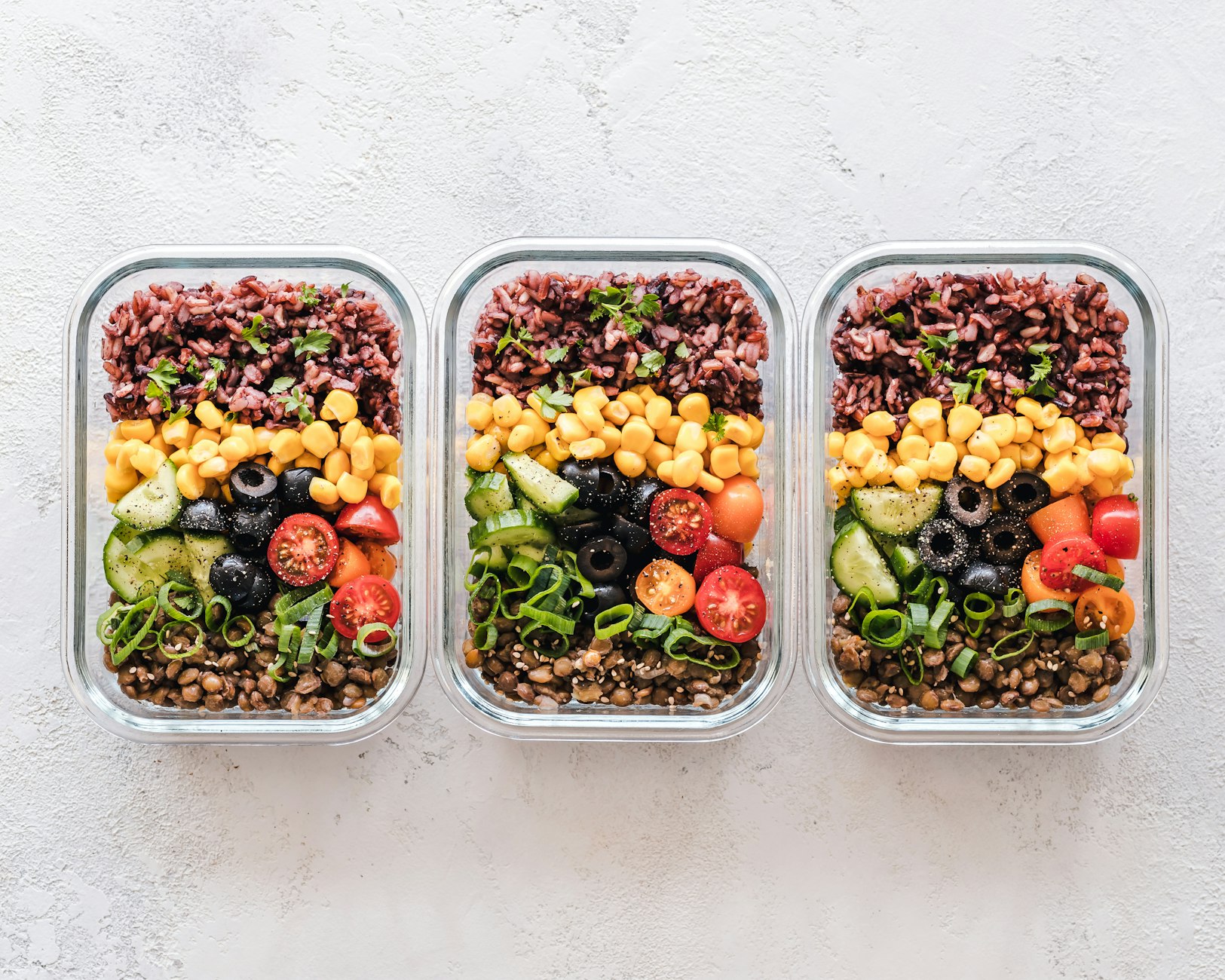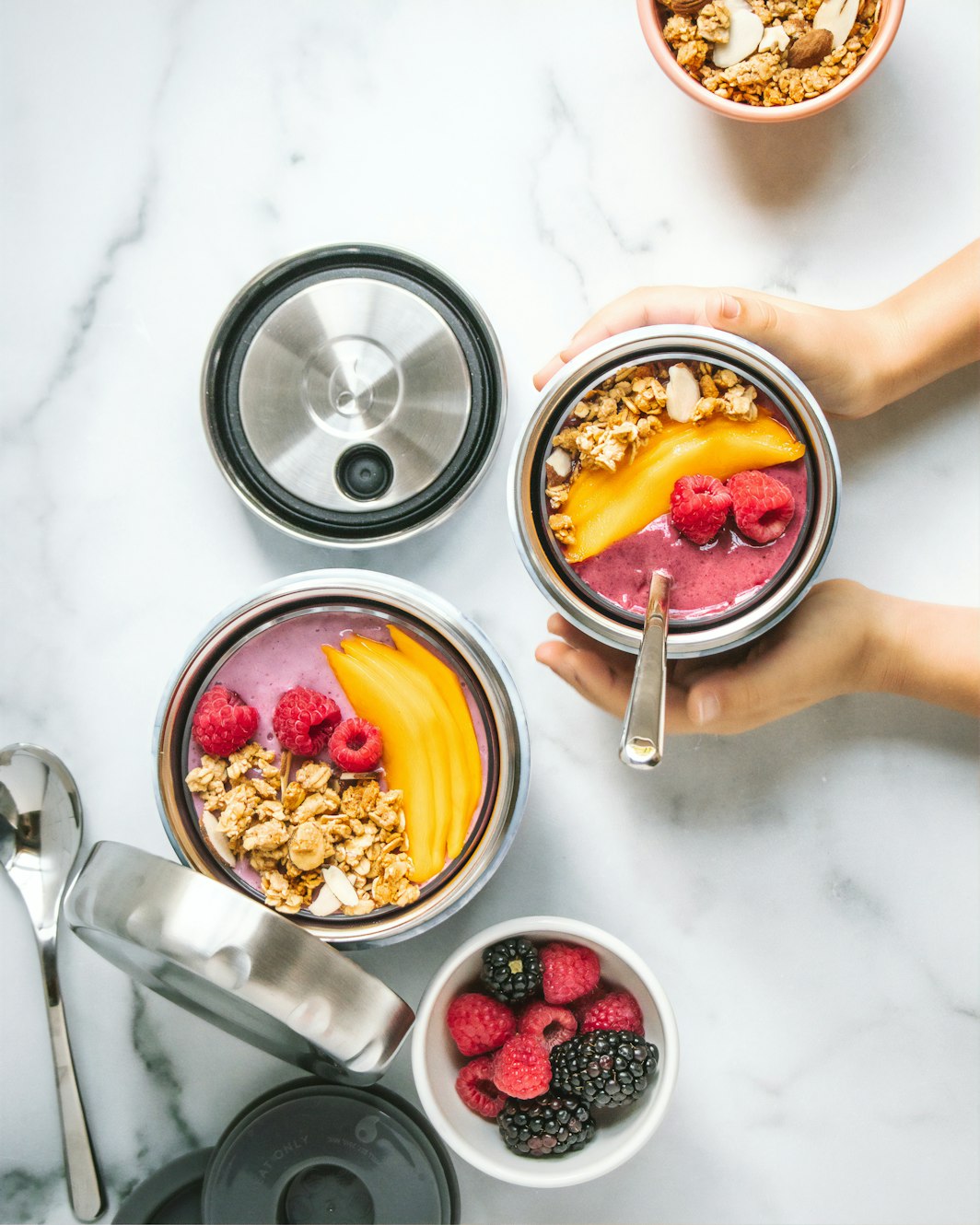Using containers to store food looks clean and organized, and helps reduce food waste and anonymity of a food item. It seems all too familiar: storing food in plastic bags, bowls wrapped with foil or plastic wrap, and/or opaque containers without any labelling, and the items are forgotten about in the fridge, leading to eventual food waste. Many of these foods get pushed to the back of the fridge and we often don’t see them until weeks later. Investing in food containers helps you keep your fridge organized, helps make the food look more appetizing, and overall leads to reduced food waste!

There are a wide variety of food container types available, and some containers are more suitable for select foods than others. Containers differ by designs, styles, purpose, sizes, and materials of food containers. As you are most familiar with the foods you eat, you can select which containers would best suit your needs.
Glass Containers vs. Plastic Containers.
Glass containers come with aluminum, glass, or wooden tops and come in a variety of sizes. Plastic containers come with plastic lids and also come in a variety of sizes. Glass containers are more durable and easier to clean. They are also microwaveable and do not emit toxic chemicals into food, like plastics do. Glass containers are more expensive, but worth the money as they are overall better in many aspects as compared to plastic containers. Glass containers are good for storing a variety of foods such as cooked foods (pasta, fried rice, proteins) and raw, but prepared foods (sliced veggies and fruits). You can also store dried foods such as nuts or beans.
Shape.
Most food storage containers are rectangular or square, which helps with storage in the refrigerator. There are also round containers that may be ideal for salads, but overall any straight-edged container would be most suitable for utilizing space best.
Lids.
Some container lids have clasps that grip tightly around the container for an airtight lock. This allows the food to stay fresher longer and reduces bacteria growth. Clasping lids also secure the food contents from leaks. When purchasing containers, it is best to purchase clasping lids rather than lids that simply press down and close.

Using Ice Cube Trays for Sauces.
Homemade sauces are typically made in larger batches, and it’s quite possible that the sauces won’t be used up within the week. To preserve the sauces for a couple months, you can place them in ice cube trays and freeze them. When they are ready to use, you already have portioned out sauce cubes that can easily be removed from the ice trays! Not all sauces freeze well so do be mindful when using this technique. Sauces such as pesto, tomato sauce, garlic and ginger purees, vegetable purees, stocks, and oils and herbs are suitable for freezing. Dairy based sauces or other condiments like mustard do not freeze well.
Freezer Bags.
Freezer bags are good storage options for meats, marinating meats, and storing bread products. The bags are clear and can be written on to label the “good by” date. Bread products that freeze well include pancakes, waffles, English muffins, bagels, and tortillas. Freezer bags can also be used to freeze soups as the soup can be frozen in a flat form, reducing the amount of storage space. Freezer bags are also good for storing and marinating meat for a few days.
Bon Appetit!